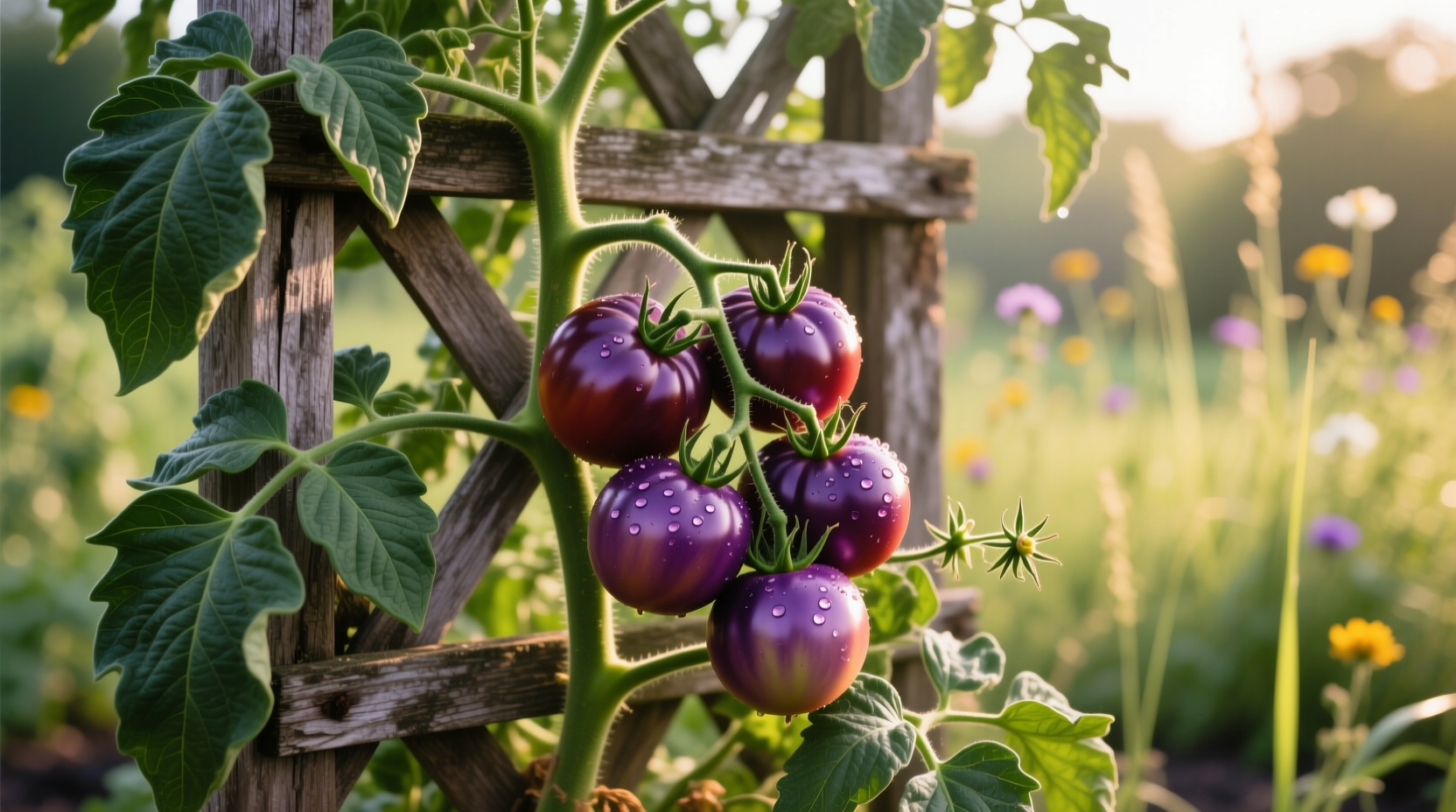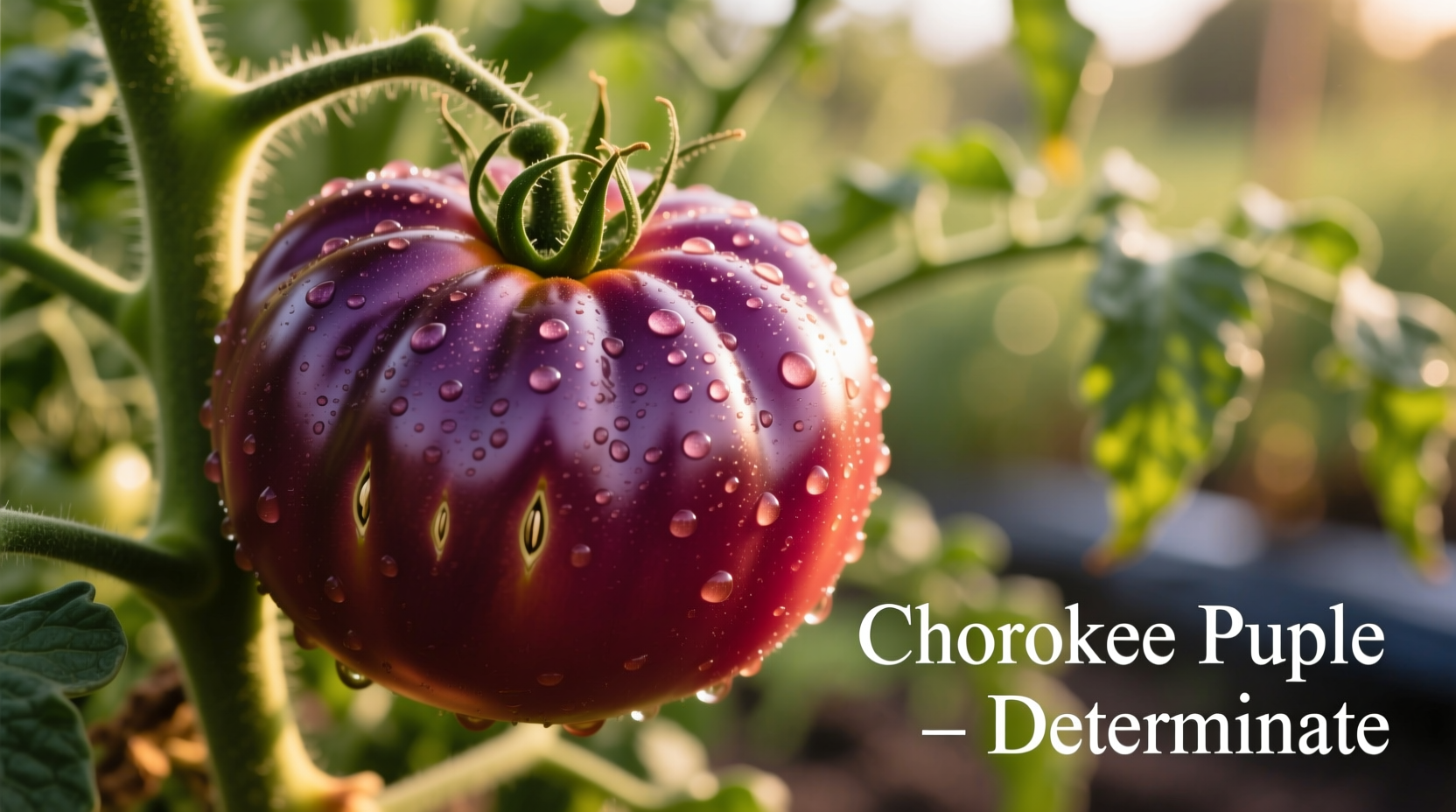Discover exactly what this means for your garden planning, space requirements, and harvest strategy with Cherokee Purple tomatoes. Whether you're a beginner gardener or seasoned grower, understanding this critical growth characteristic helps you maximize your tomato yield and avoid common planting mistakes.
Why Tomato Growth Habit Matters for Gardeners
Knowing whether your tomatoes are determinate or indeterminate isn't just botanical trivia—it directly impacts your gardening success. Indeterminate varieties like Cherokee Purple require different support systems, spacing, and pruning techniques than their determinate counterparts. Getting this wrong can lead to overcrowded plants, reduced yields, or even plant damage from inadequate support.
When you correctly identify Cherokee Purple as indeterminate, you can plan your garden layout with appropriate spacing (3-4 feet between plants), install sturdy trellising systems early in the season, and implement proper pruning techniques to maximize fruit production and plant health.
Understanding Determinate vs Indeterminate Tomatoes
Tomato varieties fall into two main growth categories, each with distinct characteristics that affect your gardening approach:
| Growth Characteristic | Determinate Tomatoes | Indeterminate Tomatoes |
|---|---|---|
| Plant Size | Compact (3-4 feet) | Vining (6-10+ feet) |
| Harvest Period | Concentrated (2-3 weeks) | Continuous (through frost) |
| Support Needs | Minimal (small cages) | Essential (sturdy stakes/trellis) |
| Pruning Requirements | Minimal | Regular (suckers removal) |
| Best For | Container gardening, canning batches | Garden beds, extended fresh eating |
Cherokee Purple: The Indeterminate Heirloom Explained
Developed and introduced by the University of Tennessee in 1990, Cherokee Purple stands out among heirloom tomatoes for its distinctive deep purple color and complex sweet-earthy flavor profile. As an indeterminate variety, it follows the typical vining growth pattern of many heirloom tomatoes.
Unlike determinate varieties that set all their fruit at once then stop growing, Cherokee Purple continues producing new flowers and fruit throughout the growing season. This means you'll enjoy a steady harvest rather than one large batch. The plants typically reach 6-8 feet in height when properly supported, with some vigorous specimens exceeding 10 feet in ideal conditions.
According to the University of Tennessee Agricultural Extension, Cherokee Purple's indeterminate nature makes it particularly valuable for home gardeners seeking a prolonged harvest season. The variety's extended production period allows for continuous picking from mid-summer through first frost, providing fresh tomatoes for salads, sandwiches, and cooking over many weeks.

Practical Growing Tips for Cherokee Purple Tomatoes
Successfully growing Cherokee Purple requires understanding and accommodating its indeterminate growth habit. Here's what experienced gardeners recommend:
Support System Requirements
Indeterminate tomatoes need robust support that accommodates vertical growth. For Cherokee Purple:
- Use 7-8 foot tall stakes or trellis systems installed at planting time
- Consider Florida weave or string trellis systems for multiple plants
- Avoid flimsy cages that won't support mature plants
- Tie plants every 12-18 inches as they grow
Pruning and Maintenance
Proper pruning maximizes fruit production and plant health:
- Remove suckers (side shoots) when small to maintain 1-2 main stems
- Prune lower leaves that touch soil to prevent disease
- Remove yellowing or diseased foliage promptly
- Top plants 4 weeks before first expected frost to focus energy on ripening existing fruit
Spacing Considerations
Give Cherokee Purple adequate room to thrive:
- Space plants 3-4 feet apart in rows 4-5 feet apart
- Consider wider spacing (4-5 feet) in humid climates for better air circulation
- Allow sufficient space between rows for access and maintenance
When Growth Habit Matters Most
Understanding Cherokee Purple's indeterminate nature becomes critical in specific gardening scenarios:
Container gardening: While possible, Cherokee Purple requires very large containers (at least 15-20 gallons) and extra-sturdy support. Smaller containers restrict root growth, limiting the plant's potential. Determinate varieties generally perform better in containers under 10 gallons.
Short-season climates: Gardeners in regions with shorter growing seasons benefit from Cherokee Purple's continuous production. Even if frost arrives early, you'll have harvested tomatoes throughout the season rather than waiting for a single determinate crop that might not fully ripen.
Garden planning: Indeterminate tomatoes require different garden layout considerations. Position them where their height won't shade other sun-loving plants, and plan for their eventual size when designing your garden map.
Cherokee Purple Development Timeline
Understanding the history of this variety provides context for its growth characteristics:
- Pre-1980s: Cherokee Purple seeds passed down through generations in eastern Tennessee, likely originating from Cherokee communities
- 1980s: John Green of Sevierville, Tennessee shares seeds with University of Tennessee researchers
- 1990: Officially introduced by University of Tennessee as 'Cherokee Purple'
- 1993: Wins All-America Selections award, boosting popularity
- 2000s-Present: Becomes one of the most popular heirloom tomato varieties in North America
This historical context explains why Cherokee Purple maintains its indeterminate growth habit—most traditional heirloom varieties from the Americas exhibit this vining pattern, which evolved to maximize production in favorable conditions.
Maximizing Your Cherokee Purple Harvest
With proper understanding of its indeterminate nature, you can optimize your Cherokee Purple tomato production:
- Start seeds indoors 6-8 weeks before last frost date
- Transplant after soil warms to at least 60°F (15.5°C)
- Apply balanced organic fertilizer at planting and side-dress when first fruits set
- Mulch heavily to maintain consistent soil moisture
- Monitor for blossom end rot and address calcium deficiencies promptly
- Expect first harvest 75-85 days after transplanting
Remember that indeterminate tomatoes like Cherokee Purple continue producing until killed by frost, so extending your season with row covers or cold frames can add valuable harvest time in cooler climates.
Are Cherokee Purple tomatoes suitable for container gardening?
Cherokee Purple can grow in containers but requires large pots (minimum 15-20 gallons) and sturdy support systems. While possible, determinate varieties generally perform better in smaller containers due to their compact growth habit.
How tall do Cherokee Purple tomato plants typically grow?
Cherokee Purple plants typically reach 6-8 feet in height when properly supported, though vigorous specimens in ideal conditions can exceed 10 feet. Their indeterminate growth means they'll continue growing until killed by frost.
Do Cherokee Purple tomatoes require pruning?
Yes, Cherokee Purple benefits from regular pruning as an indeterminate variety. Remove suckers when small to maintain 1-2 main stems, prune lower leaves that touch soil, and remove yellowing foliage to improve air circulation and direct energy to fruit production.
How does the indeterminate nature affect Cherokee Purple's harvest schedule?
As an indeterminate variety, Cherokee Purple produces fruit continuously throughout the season rather than all at once. You'll enjoy a steady harvest from mid-summer until first frost, with peak production typically occurring 8-10 weeks after transplanting.











 浙公网安备
33010002000092号
浙公网安备
33010002000092号 浙B2-20120091-4
浙B2-20120091-4